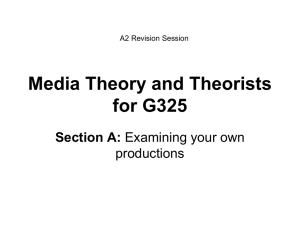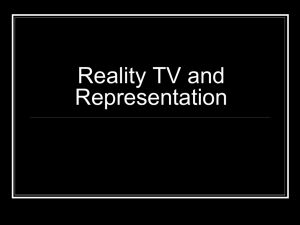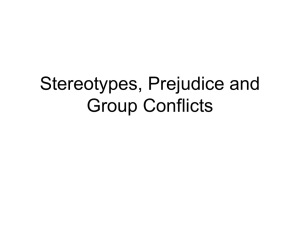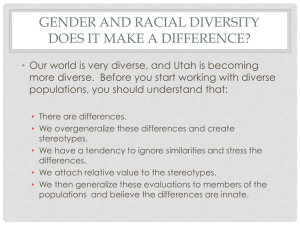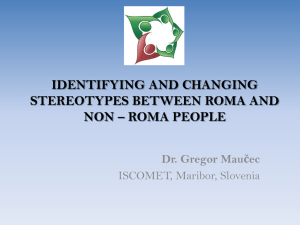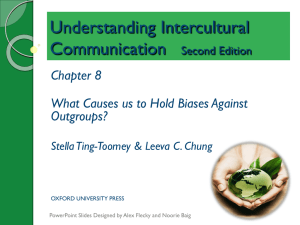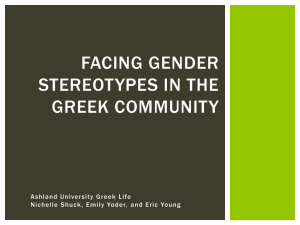Presentation on Stereotype and the Ethics of Representation.
advertisement
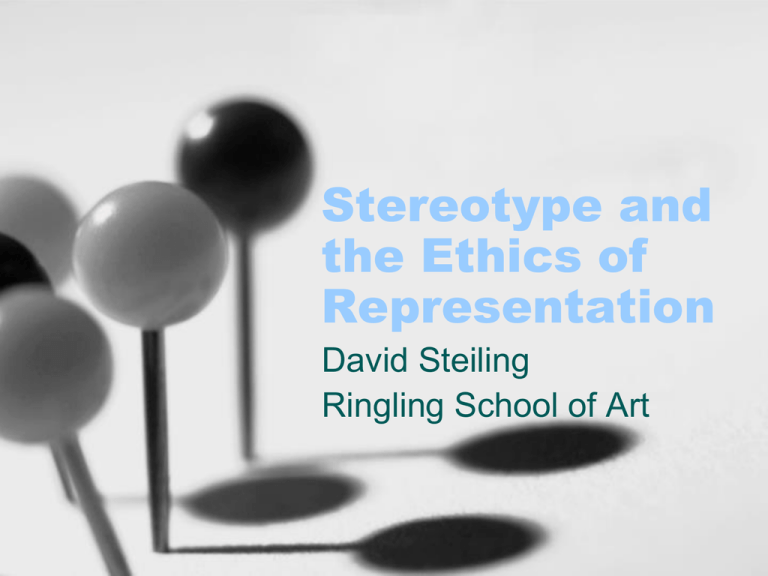
Stereotype and the Ethics of Representation David Steiling Ringling School of Art Stereotype and Cliché Both terms from printing that refer to techniques that facilitate the speed and lower the cost of production through the use of pre-set images or phrases. Comics and Stereotype “…the stereotype is a fact of life in the comics medium. It is an accursed necessity—a tool of communication that is an inescapable ingredient in most cartoons… Will Eisner—Graphic Storytelling “In comics, stereotypes are drawn from commonly accepted physical characteristics associated with an occupation. These become icons and are used as part of the language in graphic storytelling. In film, there is plenty of time to develop a character…In comics there is little time or space. The image or caricature must settle the matter instantly.” Stereotypes Good and Bad Stereotypes For Eisner the question is not whether one should use stereotypes but rather how to distinguish between “good” and “bad” stereotypes. Stereotypes Are not metonymies like most icons but are representations of idealized character types that are not based on observation, but on previous representations, which themselves were often based on previous representations. These chains of representation are often not refreshed with new observation. Over time these stereotypes tend to become widely accepted standards of reference. African-American Images in the Comics: A Case Study Frederick Strömberg in his book Black Images in the Comics provides numerous examples that illustrate how stereotype is actually used in the comics. Stereotypical Images o None of these stereotypes tell us anything about black people. o These stereotypes tell us a lot about white people. Stereotypical representations are not really present in a narrative to enhance the readability of the narrative or to develop the characters; they are usually present to reassure the reader of the safety of their opinions and prejudices, whether this is known by the author or not. Alternative Strategies of Representation • Observation—forming a representation based on actual observation, representation that reflect individuality instead of stereotypicality. • Iconic metonymy—reducing the information from an observed representation into a caricature. • Retaining the same level of caricature through all the representations in the narrative. Observation Iconic Caricature Retaining the Same Level of Caricature Some Other Considerations o The position of the creator in relation to the representations. o The centrality or marginality of the character in relation to the narrative. o Active vs. Passive qualities in the character represented. o Biases reflected in the visual composition and character poses within the images. Using Other Representation Conventions o Funny Animal Conventions o Superhero Conventions o Manga/Animé Conventions Virtual Reality Implications As narrative evolves into various modes of interactivity and virtual reality, will schemes of representation discard stereotype? Image and Objectification o Are our fantasies focused more on individuals or on stereotypes? o The more stereotypical the objects of our fantasies are represented, the more easily we can objectify them. Stereotype and Intimacy o Intimacy requires specificity and individuality. One cannot be intimate with a stereotype. o More virtual interactivity seems to require more individuality of representation. The more individuality, the more potential for intimacy. Stereotypes abet Violence o Violence is easiest to perpetrate on stereotypes. Until recently, representation in interactive gaming was capable of little individualization, so there was a natural dependence on representation that used stereotype or simple iconic forms of character design. As the range of possible representations widen, will gaming, and its virtual reality successors continue to depend on stereotypes? Can the writers of the next generation of virtual realities learn from the history of the comics. It is not just a question of “good” stereotypes versus “bad” stereotypes. The use of stereotypes is corrupting in itself. One of the features of this corruption is how the use of stereotypes teaches the audience to read the narrative of their own reality in stereotypical terms. The case history of Black Images in the Comics shows how the use of stereotypes has compromised the work of the most important and valued artists in the form. What may be betrayed is the compact between artist and audience that any reality the artist presents has been observed, observed no matter how interior, absurd, or personally scewed. Ethics, effectiveness, reputation and empathy are all compromised when artists resort to stereotypes. Audience is narrowed and distanced. Any sense of fairness or equality within the narrative is disturbed. The promise of virtual reality is to enable the transfer of dreams. Will we all be able to place ourselves fairly within those dreams? Will the dreamspace of virtual reality be a place of empathy or one of violent unconcern? Choices in representation will shape that space. Itunes Site http://podcasts.rsad.edu/comics


